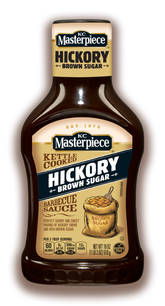A slow cooker is an easy, set-it-and-forget-it way to bring out amazing flavors.
Slow cooking is a technique that uses an electrical countertop appliance to simmer foods unattended at low temperatures for long periods of time. This cooking process saves time and money, resulting in juicy, tender meats and flavorful dishes. Assemble your ingredients before you go to work and come home to a delicious hot meal and an incredible-smelling kitchen.
Always make sure you cook to USDA-recommended safe internal temperatures. Want to know more? Check out the USDA’s official food safety education site.
- Choose the right cut: When you combine a long amount of time with low heat, fatty and tougher meats like chuck roasts, short ribs, pork shoulders and lamb shanks transform into juicy, tender masterpieces. Dark meat chicken and turkey work great too.
- The more fat or “marbling” your cut of meat has, the less liquid you’ll need to add to the slow cooker. On low heat, roasts can be cooked without any excess water.
- Browning or searing your meat and veggies before adding them to the slow cooker adds a greater depth of flavor to your recipe.
- To cut through the richness of your slow-cooked meat and brighten the flavors, add a sprinkle of fresh herbs or squeeze of lemon juice to the slow cooker at the end of simmering.
- To prevent dairy from breaking down in your slow cooker, wait to add sour cream, milk or yogurt until the last 15 minutes of cooking.
- Add fully cooked, rinsed canned beans at the end of the cooking cycle to maintain the beans’ texture. Make sure the beans are completely softened beforehand, as combining them with sugar or acidic foods can have an un-ideal, hardening effect.
- When cooking root vegetables, place them near the sides or the bottom since they often cook slower than meat.
- Slow cookers can be harsh on delicate fish. Unless the recipe says otherwise, stir it in gently during the last 15 to 30 minutes of cooking time. Then cook on high and serve immediately once done.
- Avoid using leaner cuts of meat, such as pork tenderloin or chicken breast, in the slow cooker. Cuts with little to no fat tend to dry out when slow cooked.
- While tempting, resist opening the slow cooker lid or stirring the contents. Each time you do, the heat is released, resulting in an additional 15 to 20 minutes of cooking time.
- Slow cookers don’t reliably heat frozen meat up to a safe temperature evenly or quickly enough, which is above 140°F. As a result, your meat can stay in the “danger zone” (40°F to 140°F) for too long, harvesting bacteria and becoming too unsafe to eat.
- For the best results, fill your slow cooker between ½ and 2/3 full. Use a larger slow cooker if cooking larger cuts of meat or a whole chicken. It’s most important to make sure the lid closes and fits snugly.
